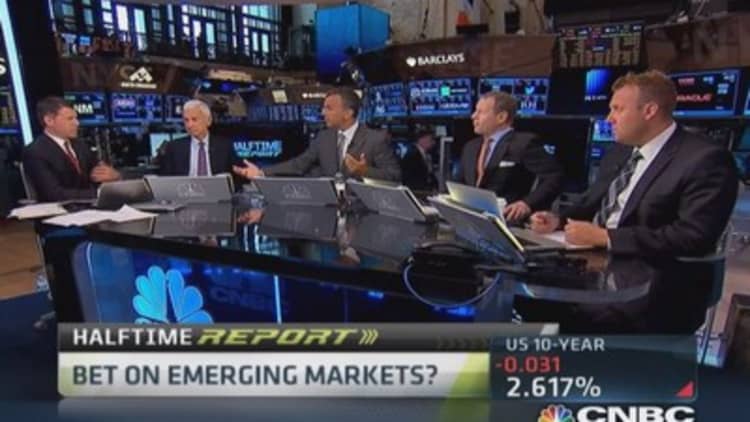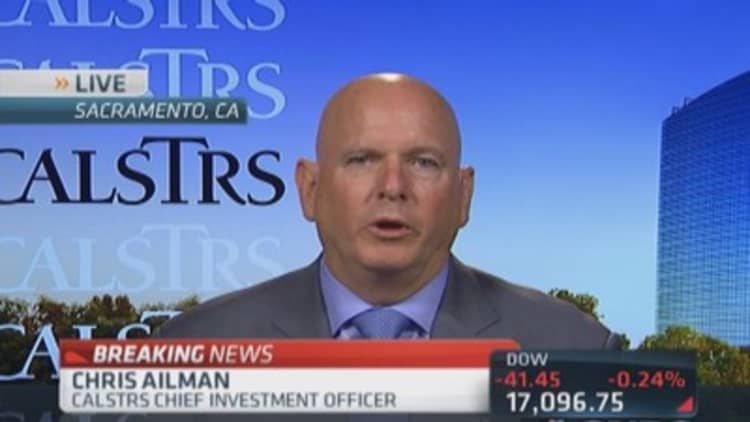Easing bank lending conditions in emerging markets may be the latest sign of improving sentiment in the once-battered sector, experts say.
The composite headline index for emerging market bank lending conditions crossed the key 50-level during the April-June period, a level not seen since the first-quarter of 2013, a survey from the Institute of International Finance (IIF) showed. The 50-level divides easing and tightening territory.
"The easing of lending conditions is a sign of improved sentiment towards emerging markets on hopes that they will recover in the second-half," said Dariusz Kowalczyk, senior economist and strategist at Credit Agricole. "Going forward, this will encourage bankers to view emerging markets more positively."
Read MoreEmerging markets: The risks markets may be missing
Emerging market assets have been on a tear following the panic selling that ensued earlier this year amid concerns about the Federal Reserve's planned exit from its quantitative easing program.

The MSCI Emerging Markets Index rose 6 percent over the past three months, Russia's benchmark index is 6 percent higher despite recent geopolitical tensions with Ukraine while Indonesian and Brazilian markets are up over 5 percent. By contrast, the is up 2 percent and the FTSE 100 is down 2 percent.
Read MoreEmerging markets take lead in 2014
A surge in loan demand alongside improving domestic and international funding conditions were the key drivers, the IFF said.
"Stronger loan demand means managers are more upbeat, but this reflects the external demand factor rather than domestic demand. The overall global environment for emerging markets is better in the second-half given the rebound we've seen in the U.S. and China during the second-quarter," Kowalczyk added.
In the IFF's report, emerging Europe saw the greatest improvement on the back of higher growth prospects in the region while spillovers from geopolitical tensions from Ukraine remained contained during the survey period.
Read MoreWill rising Treasury yields really whack EM?
"[European] loan demand increased markedly amid a recovery in private demand. Demand for business loans continued to trend higher and those for consumer loans recovered swiftly after dipping temporarily in the previous quarter. Notably, demand for commercial real-estate loans expanded for the first time since 2011," the report said.

The third-quarter could paint an even brighter picture of loan demand once the impact of the European Central Bank's lending-boosting measures kick in. In June, the central bank cut the rate on its deposit facility for banks from 0 percent to minus 0.10 percent — the first time a major global central bank has moved rates into negative territory.
However, Asia continued to witness tightening in lending with the headline index at 46.9, well below Europe, Latin America, the Middle East and Sub-Saharan Africa. Still, the reading was better than 45.7 a year ago, which marked a low not seen since the global financial crisis.
Vishnu Varathan, senior economist at Mizuho Bank said that Asia can expect more progress following easy liquidity conditions in China. In June, the People's Bank of China reduced the required reserve ratio (RRR) by 0.5 percent for banks that lend to small businesses and rural borrowers. However, he noted that China alone won't be enough to boost the rest of the region.
Read More
"On the other end of the spectrum, restrictions in Singapore and Hong Kong remain in place. Tighter lending controls are being imposed there due to asset market risks," he added.
In a note published on Monday, Fitch Ratings said that Asian banks face slowing credit growth and tighter loan monitoring in the year ahead as the credit cycle turns, adding that while authorities have taken steps to rein in indebtedness, macroeconomic stability is key to keeping losses in check.

